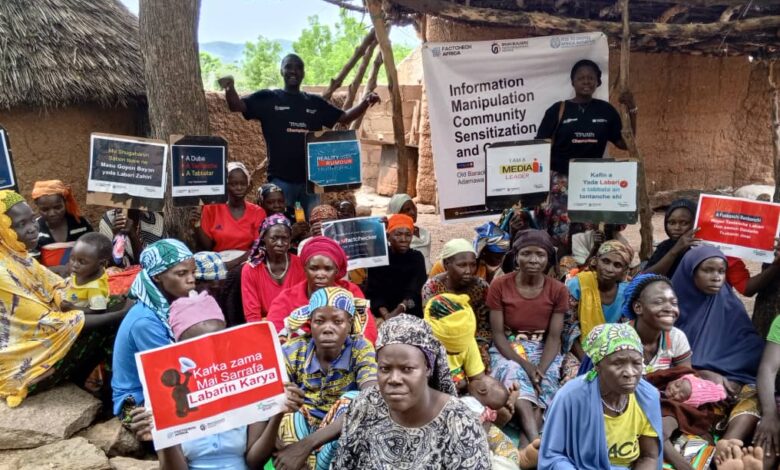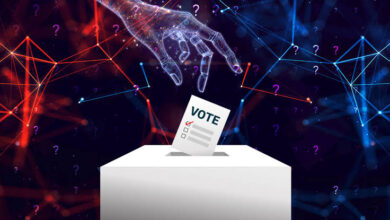Gendered Disinformation: A Silent Threat to Digital Rights and Democracy

BY: Mustapha Lawal
In an era where digital spaces have become critical avenues for public discourse and political engagement, the proliferation of disinformation has emerged as a profound threat. Among its various forms, gendered disinformation stands out for its targeted attacks on women, aiming to delegitimize, discredit, and silence their voices in the public sphere. This insidious subset of disinformation not only threatens women’s digital rights but also undermines democracy and societal equity.
Gendered disinformation refers to the deliberate creation and dissemination of false or misleading information that exploits gender stereotypes, biases, and societal norms. Also, known as Gender-based disinformation (GBD), it focuses on the intersection between disinformation and gender, where women, gender non-conforming people, and marginalised groups are disproportionately targeted and harassed by spreading deceptive or inaccurate content about them.
The techniques for diffusing gendered disinformation are diverse and can comprise misogynist comments that reinforce gender stereotypes, the sexualisation and diffusion of graphic content, online harassment including threats of violence, and even cyber-attacks. Women in politics, media, and activism are frequently targeted with false claims about their personal lives, professional competence, or morality. This phenomenon weaponizes entrenched gender prejudices to amplify hostility, discourage participation, and reinforce structural inequalities.
Individual and collective psychological effects are difficult to assess and quantify, as are the risks for researchers and fact-checkers analysing the phenomenon in the public eye. Participants at the EU DisinfoLab Community Lab in 2021 noted the cognitive dissonance and paradox produced by the claim that misogyny is emotionless and in opposition to the alleged sensitivity of women, even though gender-based disinformation aims to trigger an emotional response in the audience. This adds a further layer to the discussion about the mental health and safety of researchers fighting disinformation, e.g. fact-checkers, who are often the targets of attacks.
Gendered disinformation has consequences and impacts well beyond the women and other groups whom it targets. In many countries, women’s political leadership is challenging entrenched illiberal and autocratic political elites by disrupting what are often male-dominated political networks that had previously permitted corruption and abuse of power. Pushing women out of the political arena may only be the first step of a broader threat to democracy and human rights; a movement seeking to push female politicians and activists aside and reignite gendered stereotypes and misogyny.
Weaponizing Gender to Silence Women
The tactics of gendered disinformation are disturbingly predictable yet highly effective. Female politicians and public figures are often subjected to campaigns that question their legitimacy and competence, framed through sexist narratives. For instance, as noted in studies by Women In International Security (WIIS), female leaders are frequently accused of being overly emotional, incompetent, or engaging in inappropriate relationships. These narratives not only erode public trust in their leadership but also make the digital space increasingly hostile for other women contemplating public life.
A goal of cyber-misogyny, a core element of gender-based disinformation, is to remind women that they are inherently vulnerable; this dynamic plays along with the perpetuation of stereotypes, making it more difficult for present and future generations to eradicate these sexist constructs. Across Africa, as highlighted by the Institute of Development Studies (IDS), gendered disinformation has been weaponized against women advocating for social justice and political reform.
In several cases, manipulated images, doctored videos, and false narratives have been used to paint women as corrupt, untrustworthy, or immoral, effectively erasing their credibility and contributions. The resultant climate of fear and hostility deters many women from participating in digital discourse, exacerbating gender inequality in representation and decision-making. Depending on the context, a disinformation campaign may be life-threatening. In war-torn countries, this exclusion can go as far as preventing women from being involved in the peace process. As women withdraw from online and public spaces, or even flee their country in fear for their safety, opponents and malign actors behind disinformation campaigns may take this chance to further misrepresent them, for instance by framing them as disloyal.
The Digital Battlefield of Misinformation
Digital platforms, despite their potential for democratizing access to information, often exacerbate the problem. Algorithms designed to amplify engagement inadvertently prioritize inflammatory and sensational content, making gendered disinformation highly visible. Platforms like Facebook, X (formerly Twitter), and Instagram have become breeding grounds for coordinated attacks against women, often involving fake accounts and automated bots.
As reported by the Association for Progressive Communications (APC), online gendered disinformation campaigns frequently leverage cultural and social norms to amplify their reach and impact. By tapping into societal biases, these campaigns not only gain traction but also further entrench harmful stereotypes. For example, narratives that portray women as unfit for leadership resonate more in societies with deeply patriarchal structures, amplifying their impact and reach.
A Threat to Democracy and Human Rights
It is typical of gender-based disinformation to portray women as incapable or unworthy of occupying space in the public arena either due to intellectual limits or ulterior motives. This strategy seeks to remove them from a position of power and visibility, and can also discourage women from entering politics in the first place. It can also lead to politicians self-censoring and disengaging from the political debate in ways that harm their effectiveness and their well-being.
A silencing effect can take many forms: from women self-censoring by deleting posts to avoid harassment or entirely deleting their social media accounts, to more extreme situations where female politicians live in hiding. Examples of the latter exist from Afghanistan to Scotland and show clearly how gendered disinformation affects democratic functioning and women’s basic rights of political participation.
Gendered disinformation is not just a women’s issue; it is a democratic and human rights issue. When women are systematically targeted and silenced, the diversity of voices in public debates is compromised. This weakens democratic processes and hinders the realization of inclusive governance. Furthermore, as the Office of the United Nations High Commissioner for Human Rights (OHCHR) underscores, gendered disinformation directly infringes on the right to freedom of expression and participation, essential tenets of democracy.
The implications of this phenomenon extend beyond individual victims. Societies that fail to address gendered disinformation risk normalizing gender-based violence and discrimination, creating a culture where women are perpetually marginalized. The silencing of women also deprives societies of diverse perspectives, ultimately hindering progress on social, economic, and political fronts.
Tackling the Threat: Toward Preserving Rights
Addressing gendered disinformation requires a multi-faceted approach that combines policy, technology, and societal change. Governments and tech platforms must work together to develop and enforce regulations that curb the spread of disinformation while protecting freedom of expression. Transparency in content moderation processes, the deployment of AI to detect and mitigate harmful content, and holding perpetrators accountable are crucial steps.
Equally important is fostering digital literacy, particularly among women and marginalized communities. By equipping individuals with the skills to identify and counter disinformation, societies can build resilience against its impact. Organizations like UNESCO, and FactCheckAfrica have championed media and information literacy as vital tools in this fight, emphasizing their role in empowering users to engage critically with digital content.
Civil society organizations and feminist networks must also play a pivotal role in amplifying the voices of women targeted by gendered disinformation and advocating for systemic change. Grassroots campaigns that challenge harmful stereotypes and promote positive representations of women in media are essential for dismantling the societal norms that enable gendered disinformation to thrive.
Conclusion
Gendered disinformation is a form of digital abuse that strikes at the heart of women’s rights, societal equity, and democratic principles. Its effects are far-reaching, silencing voices, distorting narratives, and undermining trust in public institutions. Addressing this issue requires urgent and concerted efforts from all stakeholders—governments, tech companies, civil society, and individuals alike. Only by confronting and dismantling the structures that enable gendered disinformation can we create a truly inclusive and equitable digital future.




